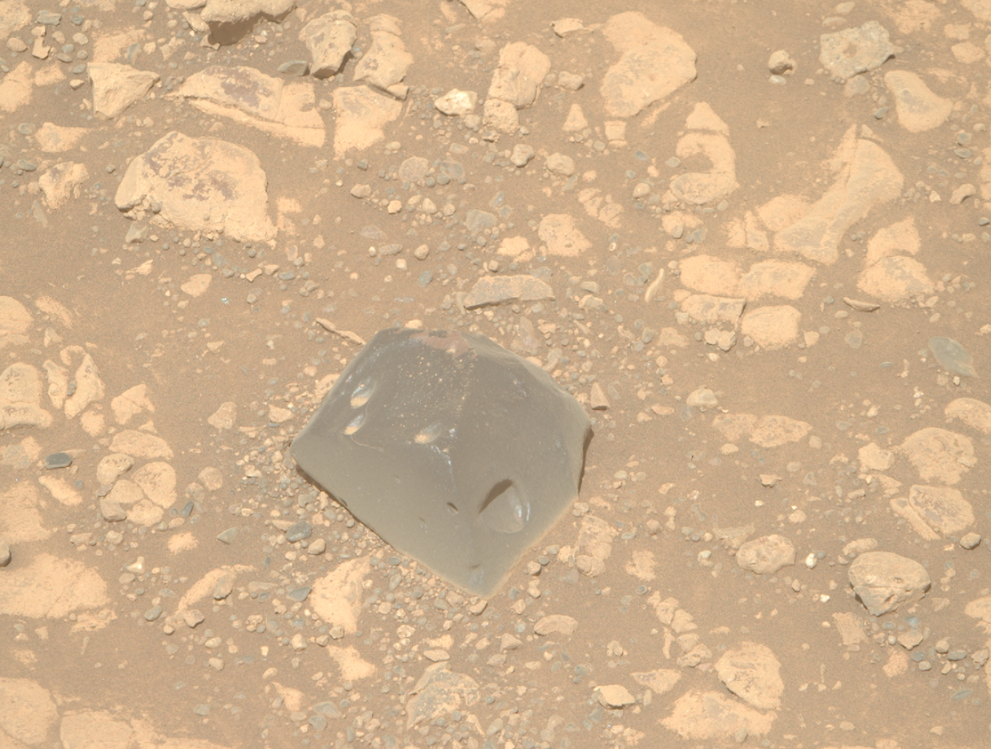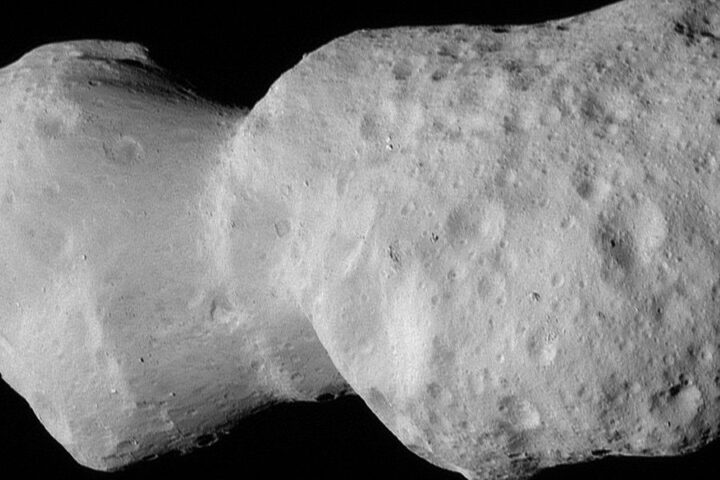A dark, pitted rock recently spotted on Mars has left NASA scientists scratching their heads. The unusual formation, nicknamed “Skull Hill” due to its distinctive appearance, was discovered by the Perseverance rover on April 11, 2025, while exploring the Jezero Crater’s rim.
The rock stands out dramatically against the lighter-colored landscape around it. With its angular shape and pitted surface, Skull Hill looks noticeably different from nearby rocks – raising questions about where it came from and how it ended up in its current location.
“We’ve found a few of these dark-toned floats in the Port Anson region,” noted Margaret Deahn, a PhD student at Purdue University working with the NASA team. “The team is working to better understand where these rocks came from and how they got here.”
A Rock Out of Place
Scientists believe Skull Hill is what they call a “float rock” – a piece of rock that formed elsewhere and was somehow transported to its current location. This movement could have happened billions of years ago when Mars was a warmer, wetter world with flowing rivers and lakes.
The rock was found in an area called Port Anson, where the rover had paused to study a boundary between light and dark rock outcrops. This geological contact zone is providing researchers with valuable insights into Mars’ complex history.
The pits that give Skull Hill its skull-like appearance might have formed in one of two ways. They could be the result of softer minerals within the rock eroding away over time, or they might have been carved by Martian winds carrying dust and sand particles that gradually wore away at the rock’s surface.
Not a Space Visitor
When researchers first spotted Skull Hill, one theory was that it might be a meteorite – a piece of space rock that crashed onto the Martian surface. The dark color reminded scientists of iron-nickel meteorites previously found in Mars’ Gale Crater by the Curiosity rover.
However, initial chemical analysis using the rover’s SuperCam instrument has ruled out this possibility. The rock’s composition doesn’t match what scientists would expect from a typical meteorite.
Instead, researchers now believe Skull Hill is most likely an igneous rock – formed from cooled magma or lava. On both Earth and Mars, such rocks often contain dark-colored minerals like olivine, pyroxene, amphibole, and biotite, which give them their distinctive appearance.
The rock might have eroded from a nearby outcrop or been blasted out of the ground by an impact that excavated deeper volcanic layers beneath the surface.
Similar Posts
Part of a Scientific Treasure Trove
Skull Hill isn’t the only unusual rock the Perseverance rover has found recently. Since beginning its exploration of the Jezero Crater rim in December 2024, the rover has been discovering new and intriguing rocks at an unprecedented rate.
“Crater rims — you gotta love ’em,” said Katie Morgan, Perseverance’s Project Scientist at NASA’s Jet Propulsion Laboratory (JPL). “The last four months have been a whirlwind for the science team, and we still feel that Witch Hazel Hill has more to tell us — it has been all we had hoped for and more.”
In recent months, Perseverance has collected samples from five rocks, analyzed seven others in detail, and used its laser to study 83 more from a distance – the fastest pace of scientific data collection since the rover landed on Mars four years ago.
Other notable discoveries include “St Paul’s Bay,” a rock with a hard, bubbly texture featuring spheres that range from pale brown at the edges to grayish in the center, and “Silver Mountain,” which NASA described as having textures “unlike anything we’ve ever seen before.”

Looking For Ancient Life
These discoveries are part of Perseverance’s primary mission: searching for signs of ancient microbial life on Mars. Scientists chose Jezero Crater as the landing site because they believe it once held a lake billions of years ago, making it a prime location to look for evidence of past life.
The unusual rocks being found along the crater rim provide important clues about Mars’ geological history and past environmental conditions that might have supported life.
Scientists hope to eventually bring these samples back to Earth for more detailed study. However, NASA’s Mars Sample Return mission is currently facing challenges related to budget, timelines, and technical complexities.
For now, the Perseverance rover continues its exploration of Witch Hazel Hill, sending back data that helps researchers piece together the puzzle of Mars’ distant past – including the story behind the mysterious Skull Hill rock that doesn’t seem to belong where it was found.


















